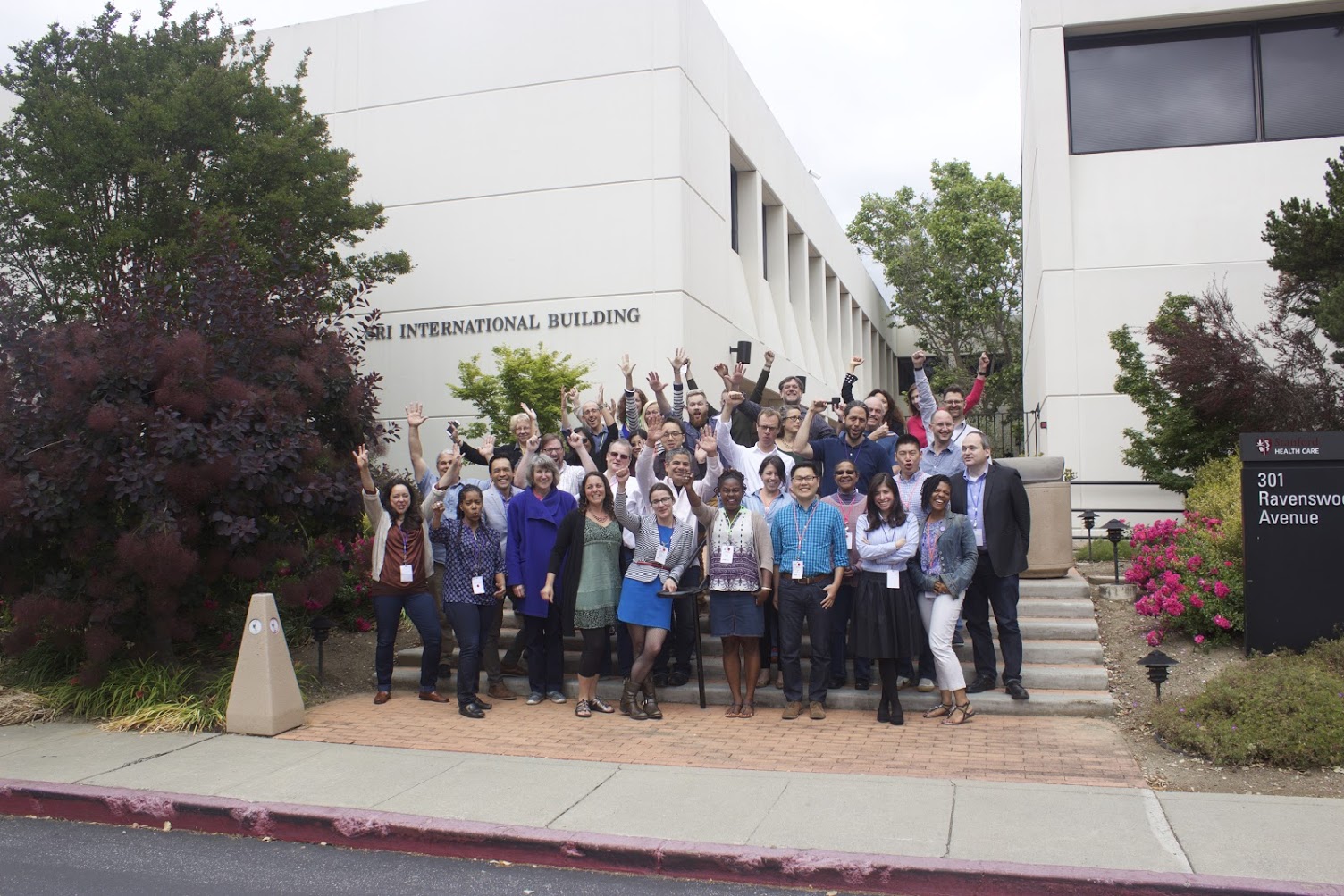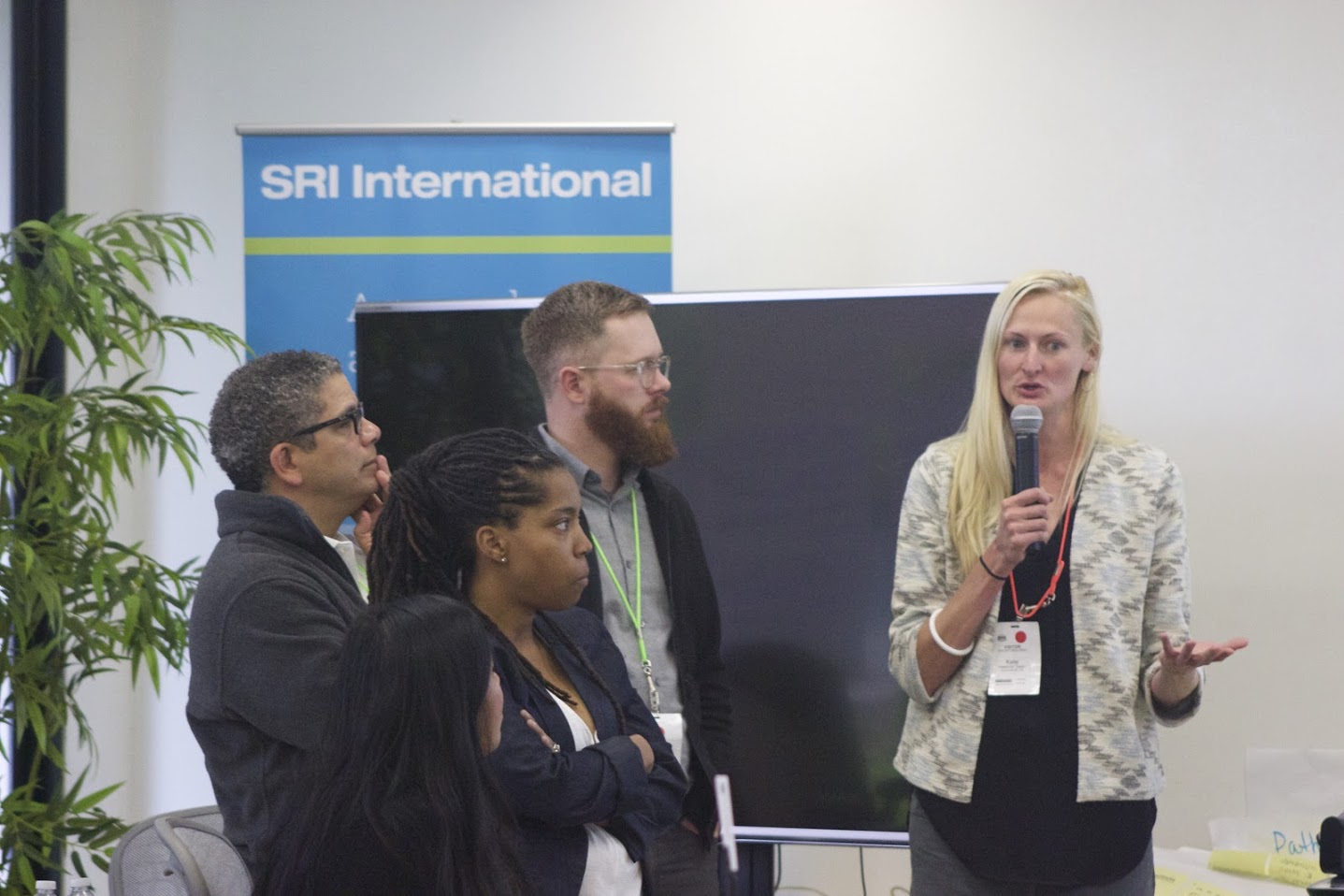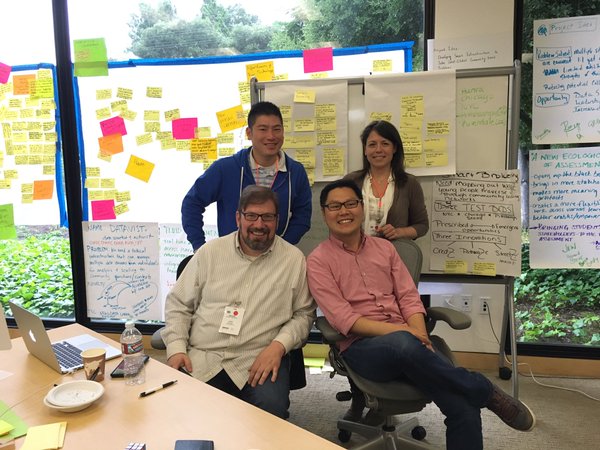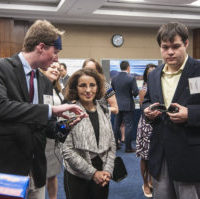Innovation Lab Maps the Future of Learning in Smart and Connected Communities
Innovation Lab Maps the Future of Learning in Smart and Connected Communities
By Jeremy Roschelle, SRI International
As more than 30 leading researchers and innovators queued to enter the lab space for an intensive week of work, the excitement and uncertainty were apparent. Two questions were on the participants’ minds: What is a “smart and connected learning community”? And what will we be doing for an entire week together?
Technology is now enabling youth to engage in learning opportunities through their communities. In Seattle, young people are mapping the learning resources within their communities. In Chicago and several other cities, a social learning platform called iRemix connects youth with extended learning and mentorship opportunities. In New York, a major science museum is re-imagining itself as serving the needs of low-income youth by engaging with churches, community spaces, and neighborhood activists in coordinated city-scale literacy and STEM learning events.

A research community is born!
Building on these cases, cyberlearning leaders can see the potential for technology platforms to enrich community spaces with new opportunities for learning. But what research and development activities are most needed to rapidly advance a focus on learning within the broader smart and connected community movement?
To answer this question, SRI International hosted an innovation lab as part of the Center for Innovative Research in Cyberlearning (CIRCL), which is sponsored by the National Science Foundation. SRI worked with KnowInnovation to facilitate the event. Approximately 30 participants were selected for the lab through an application process, based on their complementary expertise and their willingness to collaborate with others on challenging problems. In addition, four expert mentors were invited to guide the participants in their development of research agendas, and four speakers gave short, provocative talks to stimulate new thinking. To further generate novel ideas, the attendees also watched a film, Web, that raises questions for the digital learning community and attended an innovative digital art space.
The workshop was unusually broad, pulling together a research base covering:
- the learning sciences
- informal and community-based learning spaces
- the design of mobile, augmented reality, and other novel user experiences
- the analysis of learning data and large-scale community data
- youth development
- social activism in urban and rural communities
The participants worked intensively each day in new collaborative groupings. They followed an agenda that was intended to produce a major step forward each day, from building deep awareness of the knowledge in the room, to developing a broad range of innovative ideas, and eventually toward presentations of collaborative research agendas that could progress beyond the workshop.

How does youth mapping of learning resources work in four big cities?
By the end of the week, the excitement had grown, new collaborative relationships had emerged, and any initial uncertainty was replaced with concrete plans for moving forward. One team planned to expand an existing community-scale learning tool across different cities and to investigate how different contexts change the way the tool is used. Other teams focused on how to make smart city data more useful to youth, parents, educators, mentors, and others who address learning issues in their communities.
Teams also investigated new design possibilities. One team was curious about how communities could provide more spaces for learning computational thinking and left with plans to prototype activities where youth could write code to create playful, digitally enhanced experiences in their community parks and art installations. Another design team considered how the availability of 3D printers could spread learning based on historical artifacts from museums to schools and other non-museum spaces. Teams also contemplated deep, hard-to-solve issues, such as how communities could better understand and serve the emotional needs of young people who live in challenging circumstances.
Looking back on the week, one message was clear: By focusing on unlocking the potential of youth, smart and connected communities can tackle important learning challenges while also making communities better places to live.

Youth can animate public spaces, and learn coding, too!
Thus, the vitality of a community depends not only on how it leverages smart and connected tools to solve its transportation, energy, and water problems, but also how it uses these tools to improve its opportunities for learning. Future work will need to connect with urban planners and smart city developers to build relationships to ensure this important work becomes part of a broader conversation. CIRCL has published a primer on smart and connected communities for learning, which is available here: http://circlcenter.org/smart-and-connected-communities-for-learning/.
For more information on CIRCL, contact Jeremy Roschelle at jeremy.roschelle@sri.com.
About the Author
Jeremy Roschelle directs the Center for Technology in Learning at SRI International and leads the community center for all NSF-funded cyberlearning projects, called the Center for Innovative Research in Cyberlearning (CIRCL).









